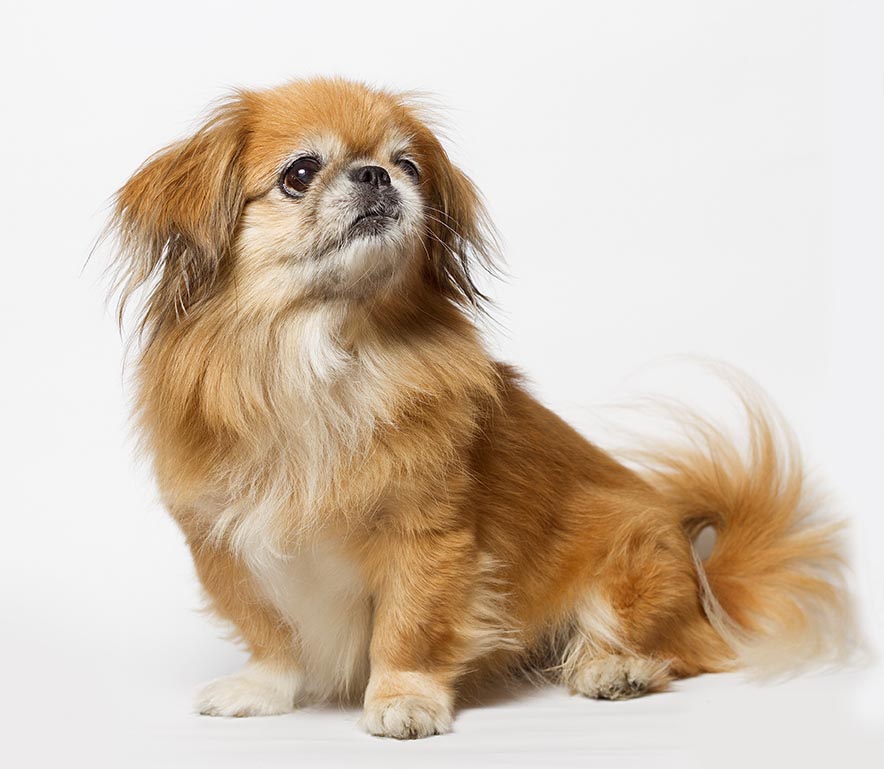Nail and ear care for your Pekingese is also an important part of the grooming process, and must be done on a regular basis. The long hair of the feet may hide the toenails, causing many owners to neglect cutting the nails as often as needed.
When you can hear the clicking nails, that means that with every step the nails are hitting the floor, and when this happens, the bones of the foot are spread, causing discomfort and eventually splayed feet and lameness.
If dewclaws are left untrimmed, they can get caught on things more easily or actually loop around and grow into the dog’s leg. You must prevent this by trimming your dog’s nails every week or two.
- Begin by handling the feet and nails daily, and then cutting the very tips of your puppy’s nails every week, taking special care not to cut the “quick” (the central core of blood vessels and nerve endings).
- You may find it easiest to cut the nails with your Pekingese lying on his back in your lap.
- If you look at the bottoms of the nails, you will see a solid core culminating in a hollowed nail. Cut the tip up to the core, but not beyond.
- On occasion, you will slip up and cause the nail to bleed. This is best stopped by styptic powder, but if this is not available, dip the nail in flour or hold it to a wet teabag.
Ear Care
The dog’s ear canal is made up of an initial long vertical segment that then abruptly angles to run horizontally toward the skull. This configuration, along with hanging hairy ear flaps, provides a moist environment in which various ear infections can flourish.
Ear Problems:
Signs of ea r problems include inflammation, discharge, foul odor, pain, scratching, shaking, tilting of the head, or circling to one side. Extreme pain may indicate a ruptured
eardrum. Ear problems can be difficult to cure
once they have become established, so early vet
erinary attention is crucial.
r problems include inflammation, discharge, foul odor, pain, scratching, shaking, tilting of the head, or circling to one side. Extreme pain may indicate a ruptured
eardrum. Ear problems can be difficult to cure
once they have become established, so early vet
erinary attention is crucial.
Bacterial and fungal infections, ear mites or ticks, foreign bodies, inhalant allergies, seborrhea, or hypothyroidism are possible underlying problems.
Note: Use cotton swabs with caution in the ear canal, as they can irritate the skin and pack debris into the horizontal canal. Never use powders in the ear, which can cake, or hydrogen peroxide, which leaves the ear moist.
A Pekingese with ear problems can benefit from having his ears bound over his head for a few hours each day to aerate and dry the canals.
Ear mites: Highly contagious and intensely irritating, ear mites are often found in puppies. Affected dogs will shake their head, scratch their ears, and carry their head sideways. A dark, dry, waxy buildup in the ear canal, usually of both ears, is the ear mite’s signature.
If you place some of this wax on a piece of dark paper, and have very sharp eyes, you may be able to see the tiny white culprits moving.
Over-the-counter ear mite preparations can cause worse irritation, so ear mites should be treated by your veterinarian. Separate a dog with ear mites from other pets and wash your hands after handling its ears.

